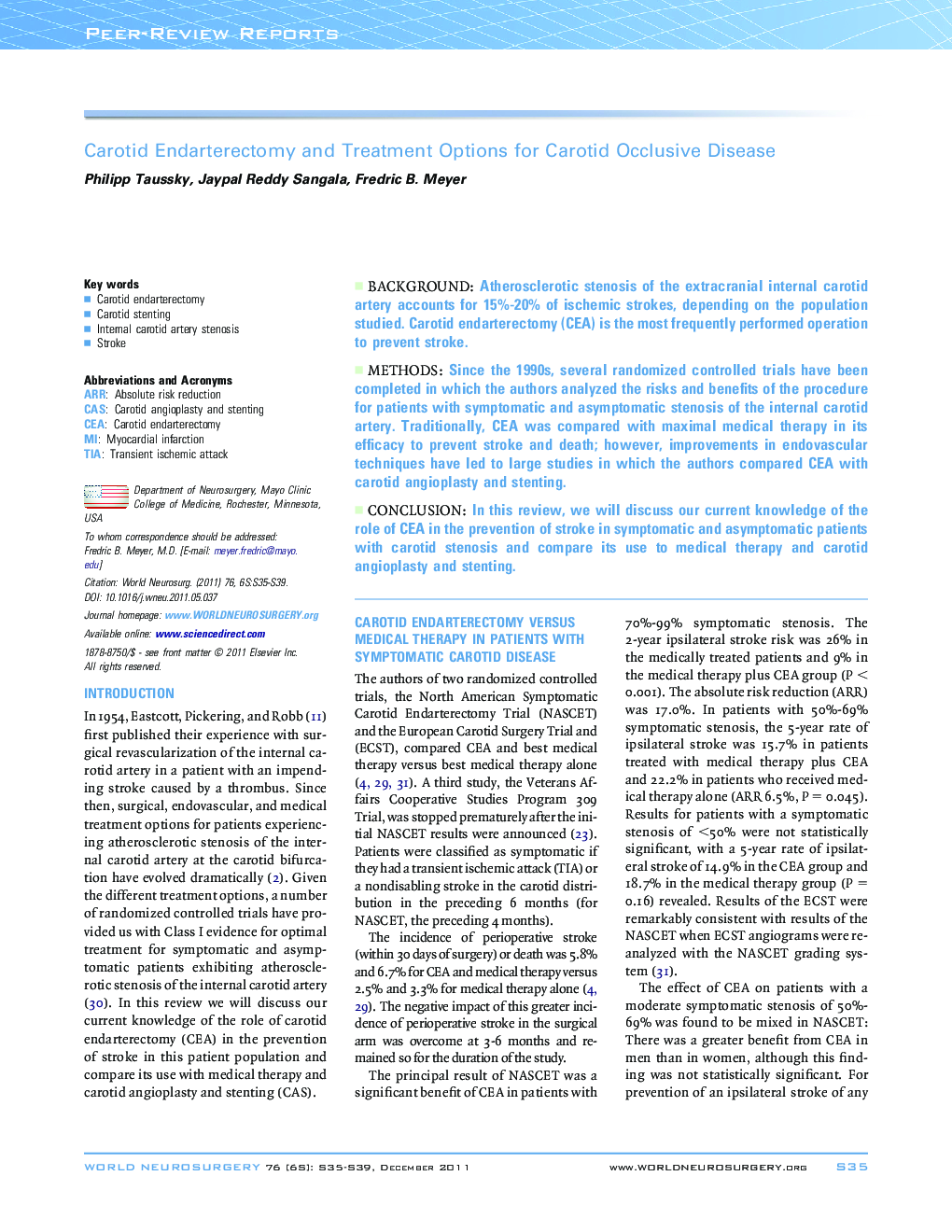| Article ID | Journal | Published Year | Pages | File Type |
|---|---|---|---|---|
| 3097579 | World Neurosurgery | 2011 | 5 Pages |
BackgroundAtherosclerotic stenosis of the extracranial internal carotid artery accounts for 15%-20% of ischemic strokes, depending on the population studied. Carotid endarterectomy (CEA) is the most frequently performed operation to prevent stroke.MethodsSince the 1990s, several randomized controlled trials have been completed in which the authors analyzed the risks and benefits of the procedure for patients with symptomatic and asymptomatic stenosis of the internal carotid artery. Traditionally, CEA was compared with maximal medical therapy in its efficacy to prevent stroke and death; however, improvements in endovascular techniques have led to large studies in which the authors compared CEA with carotid angioplasty and stenting.ConclusionIn this review, we will discuss our current knowledge of the role of CEA in the prevention of stroke in symptomatic and asymptomatic patients with carotid stenosis and compare its use to medical therapy and carotid angioplasty and stenting.
